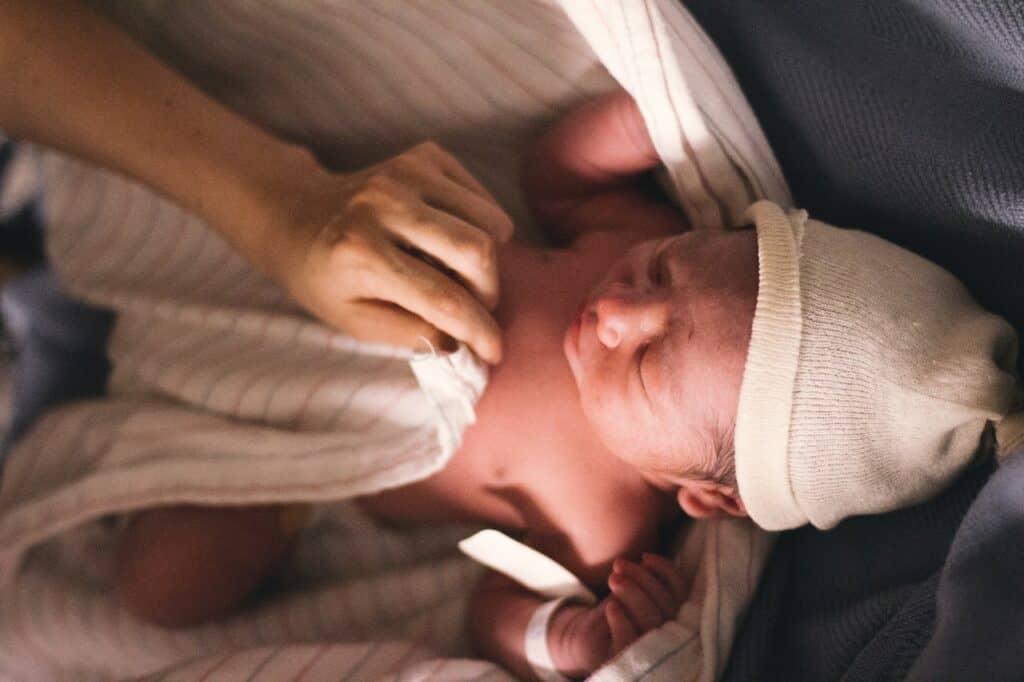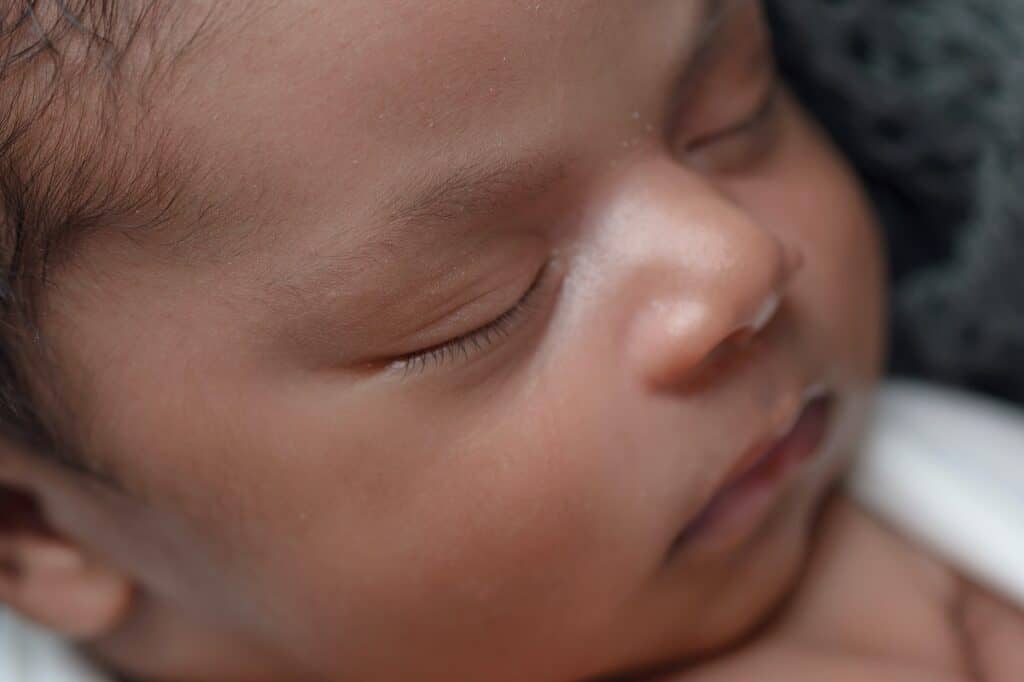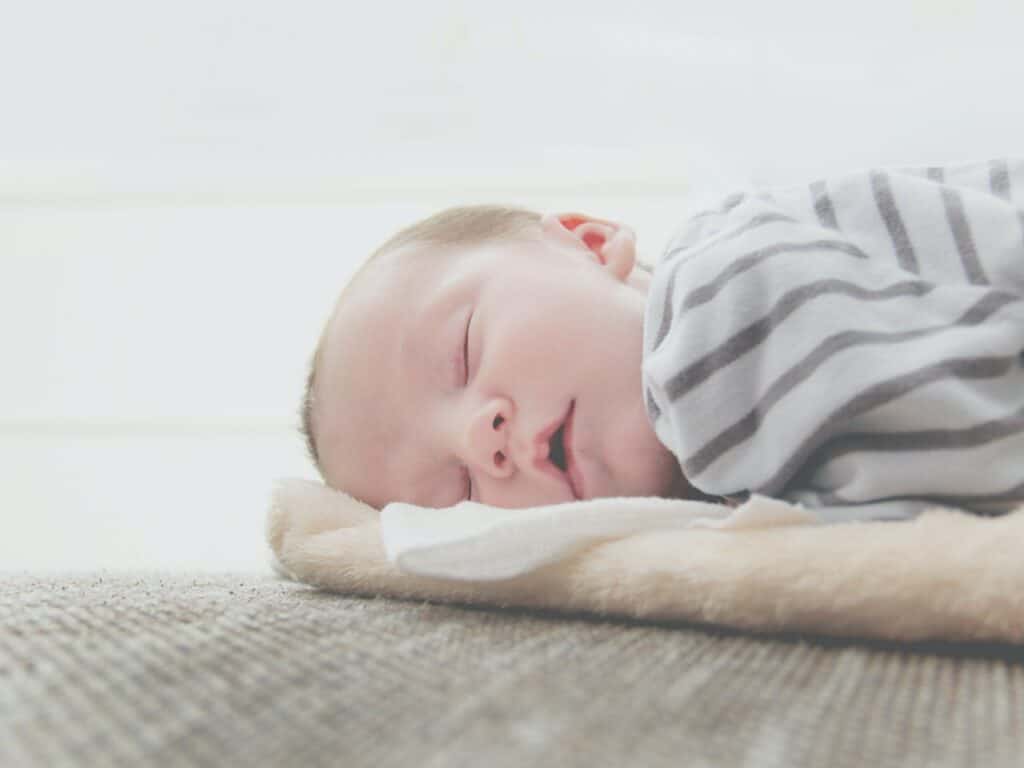Newborns are delicate beings that require extra care and attention. One of the most common issues that parents face is nasal congestion in newborns. This can cause discomfort and difficulty breathing for the baby, leading to sleepless nights and a lot of stress for parents. Fortunately, there are safe and effective ways to remove boogers from a newborn’s nose that can provide relief for both the baby and the parents.
Understanding the causes of newborn nasal congestion is the first step in addressing the issue. It can be caused by a variety of factors, including dry air, irritants, allergies, and infections. Recognizing the signs of nasal congestion in newborns is also important, as it can be difficult for them to communicate their discomfort. In this article, we will explore safe methods to remove boogers from a newborn’s nose, including the use of bulb syringes and nasal aspirators, the role of saline in clearing the nose, and alternative home remedies.
Key Takeaways
- Nasal congestion is a common issue in newborns that can cause discomfort and difficulty breathing.
- Understanding the causes and signs of nasal congestion is important for addressing the issue.
- Safe methods to remove boogers from a newborn’s nose include the use of bulb syringes and nasal aspirators, saline, and alternative home remedies.
Understanding Newborn Nasal Congestion
Newborns are prone to nasal congestion, which can be caused by a variety of factors such as a stuffy or runny nose, nasal mucus, or a blocked nose. Nasal congestion is a common condition that can cause discomfort and difficulty breathing for newborns, and it is important for parents to understand the causes and possible treatments.

Stuffy noses in newborns can be caused by a variety of factors, including allergies, irritants, and infections. Allergies can be caused by a variety of environmental factors such as dust, pollen, or pet dander. Irritants can include smoke, perfume, or cleaning products. Infections can be caused by viruses, bacteria, or fungi.
Nasal mucus is a normal part of the body’s immune system, and it helps to trap and remove dirt, dust, and other particles from the air we breathe. However, excessive mucus production can cause nasal congestion in newborns.
Blocked noses can occur when the nasal passages become swollen or inflamed, making it difficult for air to pass through. This can be caused by a variety of factors such as colds, flu, allergies, or irritants.
Parents should be aware of the signs of nasal congestion in newborns, which can include difficulty breathing, noisy breathing, snoring, or coughing. If a newborn is experiencing these symptoms, it is important to seek medical attention.
There are several treatments available for newborn nasal congestion, including saline drops, suctioning, and humidifiers. Saline drops can help to moisten the nasal passages and loosen mucus, while suctioning can help to remove excess mucus from the nose. Humidifiers can also help to moisten the air and reduce nasal congestion.
In conclusion, understanding the causes and possible treatments for newborn nasal congestion can help parents to provide the best care for their newborns.
Causes of Newborn Nasal Congestion
Newborns are prone to nasal congestion, which can be caused by various factors. Here are some of the common causes of newborn nasal congestion:

1. Cold, Flu, and Viruses
Newborns can catch colds and other respiratory infections from people around them. These illnesses can cause nasal congestion, along with other symptoms such as coughing and fever.
2. Allergies
Some newborns may be allergic to certain substances, such as pollen, dust, or pet dander. Exposure to these allergens can cause nasal congestion and other symptoms such as sneezing and watery eyes.
3. Dry Air
Dry air can irritate the nasal passages and cause congestion. This can be especially common during the winter months when indoor heating systems can dry out the air.
4. Pollen, Dirt, and Poor Air Quality
Exposure to outdoor pollutants such as pollen and dirt can also cause nasal congestion in newborns. Poor air quality can exacerbate the problem, especially in urban areas.
5. Cigarette Smoke
Exposure to cigarette smoke can also cause nasal congestion in newborns. This can be especially harmful as newborns have delicate respiratory systems that are still developing.
6. Bacteria
Bacterial infections can also cause nasal congestion in newborns. This can be particularly dangerous as bacterial infections can lead to more serious respiratory problems if left untreated.
Overall, there are many factors that can cause nasal congestion in newborns. It is important to identify the cause of the congestion in order to determine the best course of treatment.
Recognizing Signs of Nasal Congestion in Newborns
Newborns are susceptible to nasal congestion, which can make it difficult for them to breathe, eat, and sleep. It’s important for parents to recognize the signs of nasal congestion so they can take appropriate action to help their baby breathe easier.
One of the most common signs of nasal congestion in newborns is noisy breathing. If you hear your baby making snoring or wheezing sounds while breathing, it’s likely that their nasal passages are blocked. Another sign is trouble feeding, as babies who are congested may have difficulty sucking or swallowing. Coughing and sniffling are also common signs of nasal congestion.
In addition to these signs, parents should also be aware of other symptoms that may indicate a more serious problem. If your baby is running a fever, has a persistent cough, or is having trouble breathing, it’s important to seek medical attention right away.
To help relieve nasal congestion in newborns, parents can try using a nasal aspirator to suction mucus from their baby’s nose. Saline drops can also be used to help loosen mucus and make it easier to remove. Keeping the air moist with a humidifier can also help soothe congestion.
Overall, recognizing the signs of nasal congestion in newborns is important for parents to help their baby breathe easier and stay healthy.
Safe Methods to Remove Boogers
Newborns are known to produce a lot of mucus, which can lead to the formation of boogers in their nose. These boogers can make it difficult for them to breathe, eat, and sleep comfortably. It is important to remove them safely to avoid injuring the delicate nasal tissues. Here are some safe methods to remove boogers from a newborn’s nose:
Nasal Saline
Nasal saline is a safe and effective way to loosen and remove boogers from a newborn’s nose. It is a mixture of salt and water that helps to moisturize the nasal passages and break up the mucus. To use nasal saline, follow these steps:
- Lay the baby on their back with their head tilted slightly back.
- Use a dropper to place a few drops of saline solution into each nostril.
- Wait a few seconds to allow the saline to loosen the mucus.
- Use a nasal aspirator or bulb syringe to suction out the loosened mucus.
Nasal Aspirator or Bulb Syringe
A nasal aspirator or bulb syringe is another safe and effective way to remove boogers from a newborn’s nose. It works by creating suction to draw out the mucus. To use a nasal aspirator or bulb syringe, follow these steps:
- Squeeze the bulb or aspirator to expel any air.
- Gently insert the tip into one nostril.
- Release the bulb or aspirator to create suction.
- Slowly remove the bulb or aspirator to suction out the mucus.
- Repeat the process on the other nostril.
Tissue
Using a tissue to remove boogers is another safe method. However, it is important to do it gently to avoid injuring the delicate nasal tissues. To use a tissue, follow these steps:
- Gently wipe the outside of the baby’s nostrils with a tissue.
- Fold the tissue and gently insert it into one nostril.
- Twist the tissue to wrap around the booger.
- Gently pull the tissue out to remove the booger.
- Repeat the process on the other nostril.
It is important to avoid using any sharp objects or picking the nose to remove boogers, as this can cause injury and lead to infection. Always wash your hands before and after removing boogers to prevent the spread of germs.
Using Bulb Syringes and Nasal Aspirators
Bulb syringes and nasal aspirators are commonly used to clear newborns’ noses. These tools are designed to suck out mucus from the baby’s nose, making it easier for them to breathe. There are different types of nasal aspirators available in the market, but the most popular ones are bulb syringes and suction aspirators.

Bulb syringes, also known as rubber bulbs, are the most common type of nasal aspirator. They are made of rubber and have a bulbous end that is squeezed to create suction. These are easy to use and can be found in most drugstores or baby stores.
Suction aspirators, such as the Occobaby Baby Nasal Aspirator and NoseFrida, are more advanced and require a bit more skill to use. They work by using a tube to create suction, which is then used to suck out the mucus from the baby’s nose.
To use a bulb syringe, follow these steps:
- Squeeze the bulb before inserting it into the baby’s nose.
- Gently insert the tip of the bulb syringe into one of the baby’s nostrils.
- Release the bulb slowly to create suction.
- Remove the bulb from the baby’s nose and squeeze the mucus into a tissue.
- Repeat the process with the other nostril.
To use a suction aspirator, follow these steps:
- Assemble the aspirator according to the manufacturer’s instructions.
- Gently insert the tip of the aspirator into one of the baby’s nostrils.
- Create suction by using your mouth to suck on the other end of the tube or by using a separate suction device.
- Remove the aspirator from the baby’s nose and clean it according to the manufacturer’s instructions.
- Repeat the process with the other nostril.
It is important to clean the bulb syringe or suction aspirator after every use to prevent the spread of germs. Follow the manufacturer’s instructions for cleaning and sterilizing the device.
Overall, bulb syringes and nasal aspirators are effective tools for clearing newborns’ noses. They are easy to use and can provide quick relief for a congested baby.
The Role of Saline in Clearing Newborn’s Nose
Saline is a saltwater solution that can be used to help clear a newborn’s nose. It is a gentle and effective way to moisten and loosen the mucus in the nasal passages, making it easier to remove.
There are two main ways to administer saline to a newborn’s nose: saline spray and saline drops. Saline spray is a convenient option for parents who want to quickly and easily administer saline. It can be sprayed directly into the nostrils, and the mist will help to moisten and loosen the mucus. Saline drops are another option, and they can be administered using a dropper. A few drops of saline can be placed in each nostril to help clear the mucus.
When using saline to clear a newborn’s nose, it is important to use a gentle touch. The nasal passages of a newborn are delicate, and excessive force can cause discomfort or even injury. It is also important to use a clean dropper or spray bottle to avoid introducing bacteria into the nasal passages.
Saline can be used as often as needed to help clear a newborn’s nose. It is a safe and effective way to help relieve congestion and make breathing easier for a newborn. However, if the congestion persists or worsens, it is important to consult a pediatrician to rule out any underlying medical conditions.
Alternative Home Remedies
Aside from using a bulb syringe or nasal aspirator, there are other home remedies that can help clear a newborn’s stuffy nose. Here are some alternative methods:

1. Humidifier
A humidifier can help add moisture to the air, which can help loosen the mucus in a newborn’s nose. A cool-mist humidifier is recommended, as it poses less of a burn risk than a warm-mist humidifier. Be sure to clean the humidifier regularly to prevent the growth of mold and bacteria.
2. Steam
Steam can also help loosen mucus in a newborn’s nose. One method is to take the baby into a steamy bathroom while running a hot shower. Another option is to use a warm washcloth and hold it near the baby’s nose and mouth, being careful not to cover their face.
3. Warm Bath
A warm bath can also help loosen mucus and provide relief for a congested baby. The steam from the bath can also help clear the nasal passages. Be sure to supervise the baby at all times and never leave them unattended in the bath.
4. Eucalyptus Oil
Some parents find that adding a few drops of eucalyptus oil to a humidifier or steamy bathroom can help relieve nasal congestion. However, it is important to use caution when using essential oils around newborns, as they can be irritating to their delicate respiratory systems.
5. Neti Pots
Neti pots can be used to flush out the nasal passages with a saline solution. However, neti pots are not recommended for use in newborns, as they may not be able to tolerate the sensation of water in their nose.
6. Vapor Rub
Vapor rub can provide relief for a congested baby when applied to their chest or back. However, it is important to use a baby-safe vapor rub and to avoid applying it directly to the baby’s nose or face.
Overall, these alternative home remedies can provide relief for a congested newborn. However, it is important to consult with a pediatrician before trying any new remedies, especially if the baby is experiencing any other symptoms or if they have a pre-existing medical condition.
Preventing Nasal Congestion in Newborns
Newborns are susceptible to nasal congestion due to their small nasal passages. This can make it difficult for them to breathe, feed, and sleep comfortably. However, there are several ways to prevent nasal congestion in newborns.
Filter the Air
Filtering the air can help reduce the amount of dust, germs, and allergens that a newborn inhales. It is recommended to use a HEPA filter in the baby’s room to remove airborne particles.
Keep the Environment Clean
Keeping the baby’s environment clean is crucial in reducing the risk of nasal congestion. Wet diapers should be changed frequently, and the baby’s bedding and clothes should be washed regularly. Vacuuming the house frequently can also help reduce the amount of dust in the air.
Maintain Home Air Quality
Maintaining good home air quality is essential in preventing nasal congestion in newborns. Avoid using harsh cleaning products and air fresheners that can irritate the baby’s nasal passages. It is also recommended to keep the humidity level between 30-50% to prevent dry air.
Hydration
Keeping the baby hydrated can help prevent nasal congestion. Breastfeeding or formula feeding on demand can ensure that the baby is getting enough fluids. If the baby is congested, using a saline nasal spray or drops can help loosen mucus and make it easier for the baby to breathe.
Routine Care
Establishing a routine for caring for the baby can also help prevent nasal congestion. This includes regular cleaning of the baby’s nose with a bulb syringe or nasal aspirator, especially before feedings and bedtime.
In conclusion, preventing nasal congestion in newborns is essential in ensuring their comfort and well-being. By filtering the air, keeping the environment clean, maintaining home air quality, keeping the baby hydrated, and establishing a routine care, parents can help reduce the risk of nasal congestion in their newborns.
When to Consult a Pediatrician
While most cases of boogers in a newborn’s nose can be easily managed at home, there are certain situations where it is important to seek medical attention from a pediatrician. Here are some instances when you should consult a pediatrician:

- Infection: If you notice that your newborn has a fever, is coughing, or has difficulty breathing, it could be a sign of an infection. In this case, it is important to consult a pediatrician as soon as possible to prevent any further complications.
- Dehydration: If your newborn is not drinking enough fluids and is showing signs of dehydration, such as dry mouth, sunken eyes, or decreased urine output, it is important to seek medical attention. A pediatrician can help determine the cause of dehydration and provide the necessary treatment.
- Discomfort: If your newborn is experiencing discomfort or pain due to the boogers in their nose, it is important to consult a pediatrician. They can provide advice on how to alleviate the discomfort and may recommend over-the-counter medications if necessary.
- Lungs: If the boogers are causing your newborn to have difficulty breathing or if they are coughing frequently, it is important to consult a pediatrician. They can assess your newborn’s lungs and determine if any further treatment is necessary.
- Bleeding: If you notice any bleeding from your newborn’s nose, it is important to seek medical attention. A pediatrician can help determine the cause of the bleeding and provide the necessary treatment.
- SIDS: If your newborn is at risk of Sudden Infant Death Syndrome (SIDS), it is important to consult a pediatrician before attempting to remove the boogers from their nose. They can provide guidance on how to safely manage the boogers without increasing the risk of SIDS.
- Medication: If your newborn is taking any medication, it is important to consult a pediatrician before attempting to remove the boogers from their nose. Some medications can cause nasal dryness or irritation, which can make it more difficult to remove the boogers safely.
In general, if you are unsure whether or not to consult a pediatrician, it is always better to err on the side of caution and seek medical attention if you have any concerns about your newborn’s health.
Conclusion
In conclusion, caring for a newborn’s nose is an important aspect of overall newborn care. As discussed in this article, there are several methods available for removing boogers from a newborn’s nose. It is important to remember that newborns have delicate nasal passages, and care should be taken to avoid causing any damage or discomfort.
The most effective method for removing boogers from a newborn’s nose is using a nasal aspirator. This tool is specifically designed to gently suction out mucus and boogers from the nasal passages. However, it is important to use the aspirator correctly and not to insert it too far into the nose.
Saline drops and a bulb syringe are also effective methods for removing boogers from a newborn’s nose. It is important to use the saline drops to loosen the mucus before using the bulb syringe to suction it out. Additionally, a humidifier can help keep the nasal passages moist and prevent the formation of dry boogers.
Overall, parents should consult with their pediatrician if they have any concerns about their newborn’s nasal health. By following the tips and techniques outlined in this article, parents can help keep their newborn’s nose clean and clear, promoting better breathing and overall health.
Frequently Asked Questions
How often should I suction my newborn’s nose?
It is recommended to suction your newborn’s nose as often as needed, especially if they are having difficulty breathing or feeding due to a stuffy nose. However, it is important to not overdo it as excessive suctioning can cause irritation and swelling in the nasal passages.
How do I safely use a nasal syringe on my newborn?
To safely use a nasal syringe, first, ensure that the syringe is clean and sterile. Then, gently insert the tip of the syringe into one nostril while holding the other nostril closed with your finger. Slowly release the bulb to suction out the mucus. Repeat the process on the other nostril.
What are some natural ways to unblock my baby’s nose?
Some natural ways to unblock your baby’s nose include using a saline solution to flush out the nasal passages, using a humidifier to add moisture to the air, and elevating their head while sleeping to help with drainage.
Is it safe to use breastmilk to clear my baby’s nose?
Breastmilk is a natural and safe way to clear your baby’s nose. You can use a dropper to put a few drops of breastmilk into each nostril to help loosen the mucus.
What is the best sleeping position for a baby with a stuffy nose?
The best sleeping position for a baby with a stuffy nose is on their back with their head slightly elevated. This helps with drainage and can make breathing easier.
What is the most effective baby nasal aspirator for removing boogers?
There are several types of baby nasal aspirators available, including bulb syringes, electric nasal aspirators, and manual nasal aspirators. The most effective one will depend on your baby’s individual needs and preferences. It is recommended to consult with your pediatrician before choosing a nasal aspirator.
Related Post: Are Crayola Markers Toxic?

Iesha is a loving mother of 2 beautiful children. She’s an active parent who enjoys indoor and outdoor adventures with her family. Her mission is to share practical and realistic parenting advice to help the parenting community becoming stronger.
